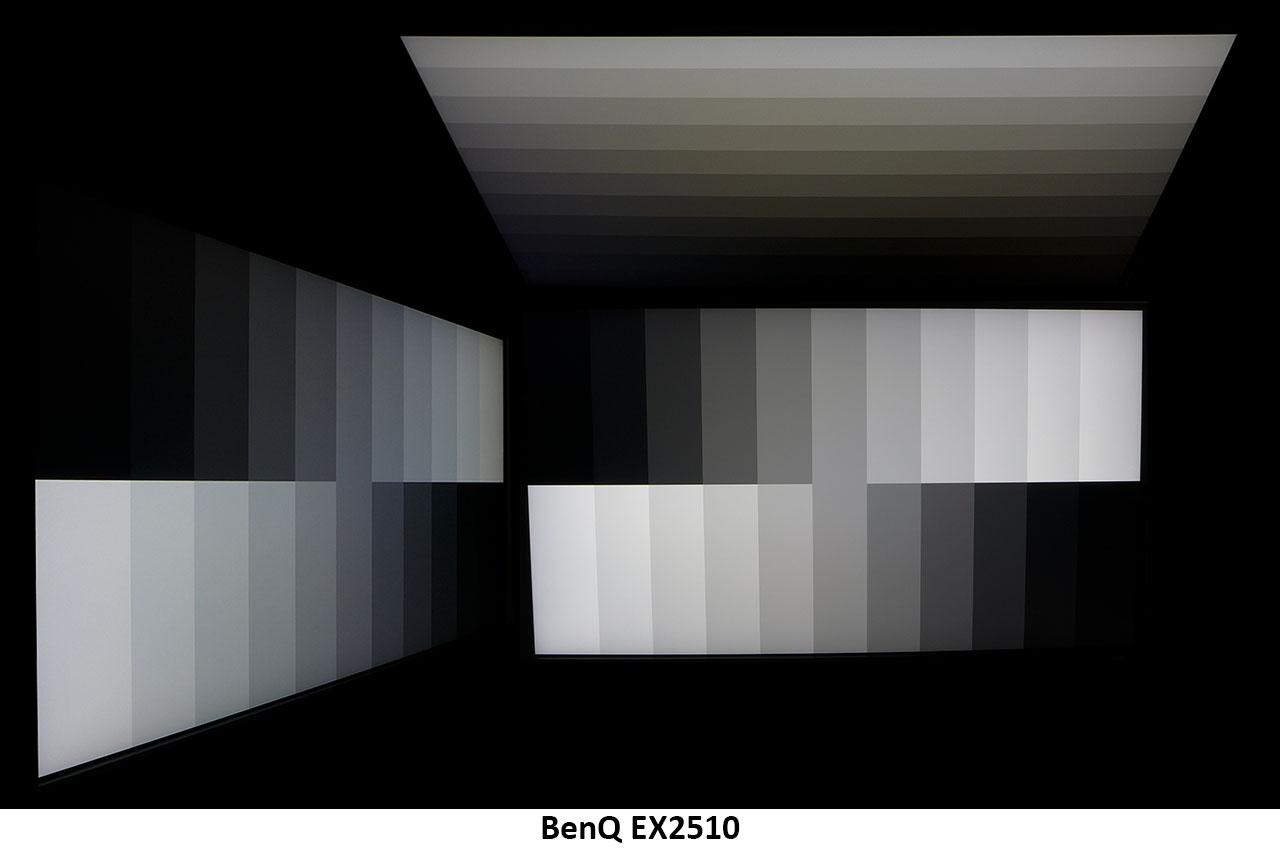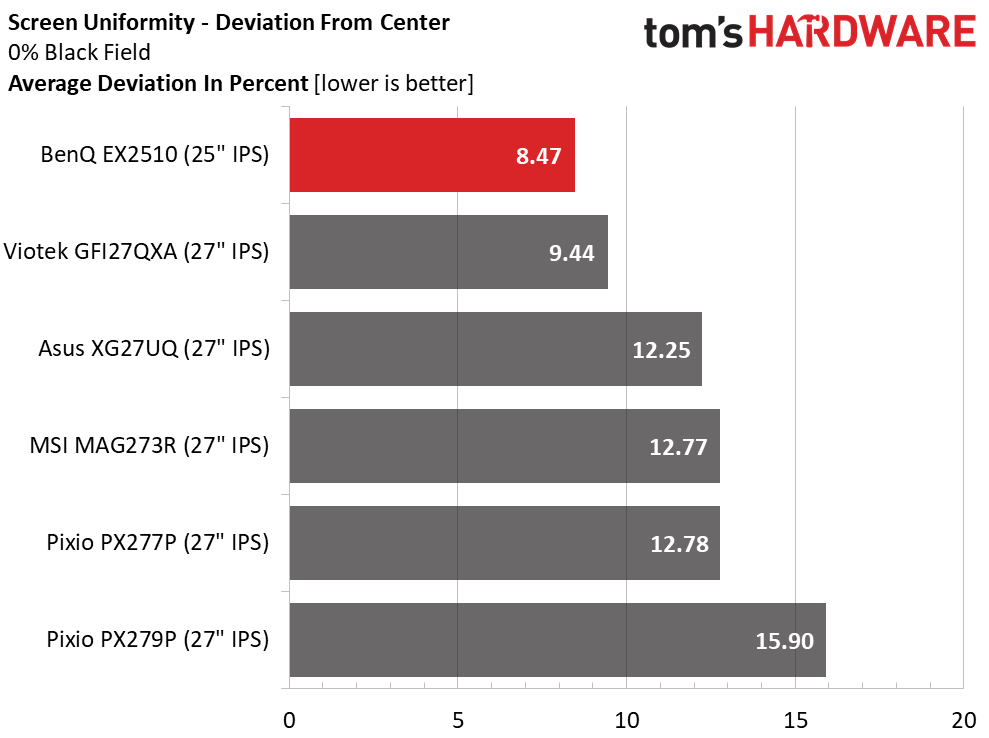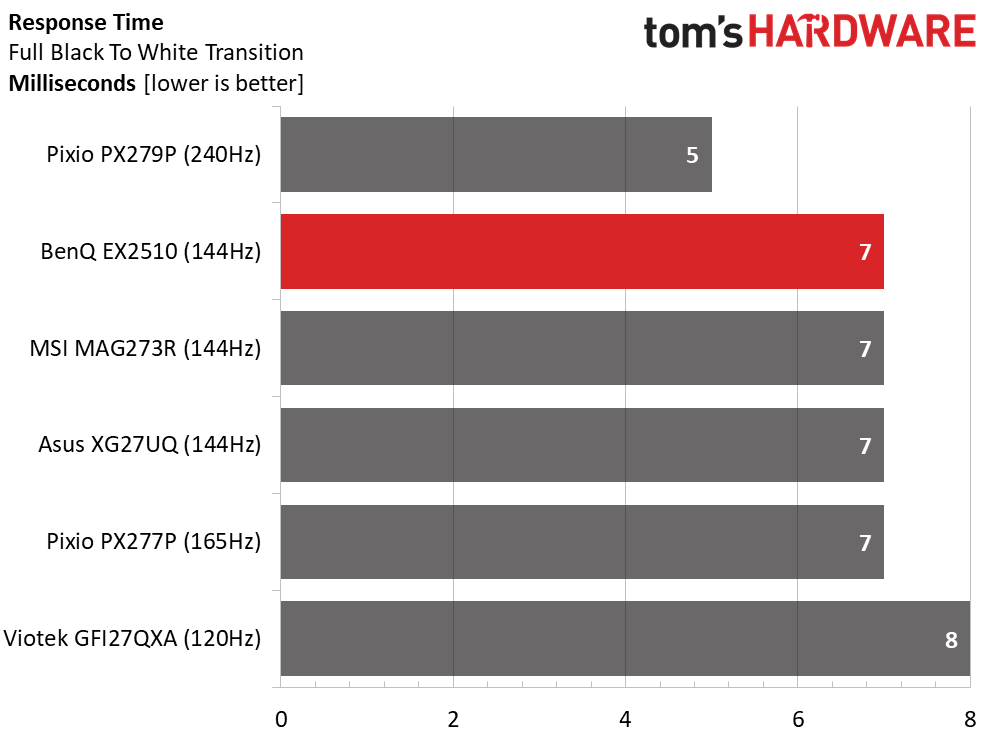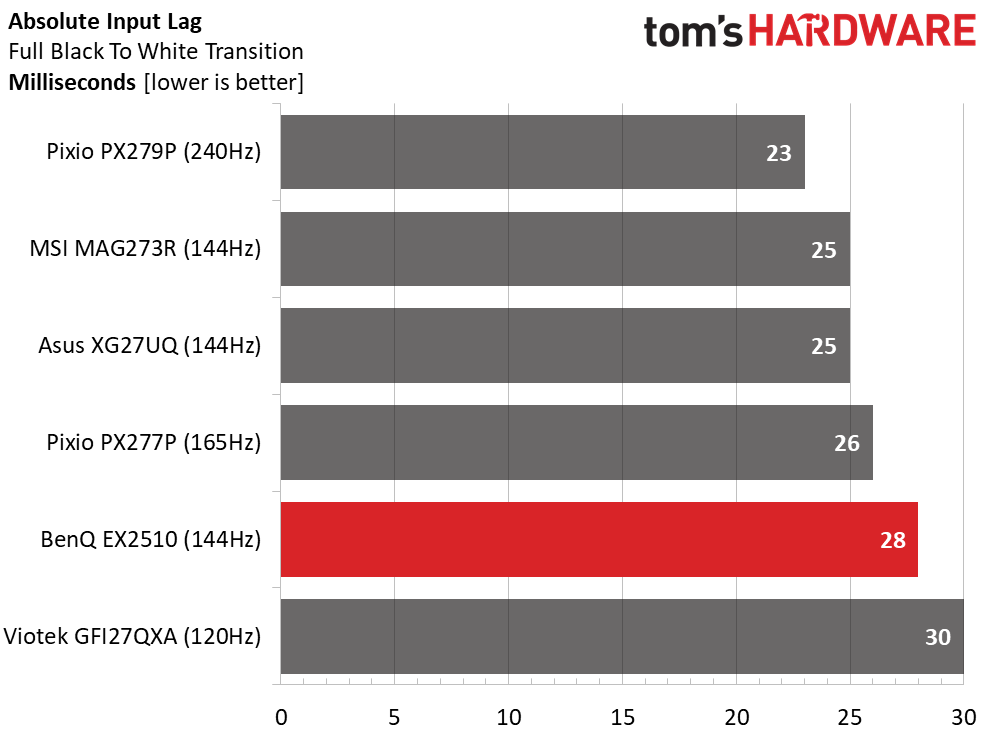Why you can trust Tom's Hardware
Viewing Angles

The EX2510 performed like a typical IPS panel in our off axis viewing test. The side view went blue with a small reduction, about 20%, in brightness. The top view is greenish, but detail stays strong throughout the brightness range. Output is about 40% lower in the vertical plane.
Screen Uniformity
To learn how we measure screen uniformity, click here.

Our EX2510 sample showed no screen uniformity issues in the black field pattern test. No glow or bleed was visible anywhere on the screen. Brighter patterns showed no problems with color uniformity. This is a very well-made monitor.
Pixel Response & Input Lag
Click here to read up on our pixel response and input lag testing procedures.


It’s an inescapable fact that in the gaming monitor genre, speed costs money. Running at 144 Hz, the EX2510 moves pixels as fast as any other 144 Hz screen in the response test and is just 2-3ms behind other 144 Hz monitors in overall lag score. Hardcore gamers may want to pay more for those 3ms, but casual gamers will have a more than satisfying experience. If you want 5ms less control lag, the PX279 Prime will cost you about $100 more. At the BenQ’s price point though, gaming performance is excellent.
Get Tom's Hardware's best news and in-depth reviews, straight to your inbox.
Current page: Viewing Angles, Uniformity, Response & Lag
Prev Page HDR Performance Next Page Conclusion
Christian Eberle is a Contributing Editor for Tom's Hardware US. He's a veteran reviewer of A/V equipment, specializing in monitors. Christian began his obsession with tech when he built his first PC in 1991, a 286 running DOS 3.0 at a blazing 12MHz. In 2006, he undertook training from the Imaging Science Foundation in video calibration and testing and thus started a passion for precise imaging that persists to this day. He is also a professional musician with a degree from the New England Conservatory as a classical bassoonist which he used to good effect as a performer with the West Point Army Band from 1987 to 2013. He enjoys watching movies and listening to high-end audio in his custom-built home theater and can be seen riding trails near his home on a race-ready ICE VTX recumbent trike. Christian enjoys the endless summer in Florida where he lives with his wife and Chihuahua and plays with orchestras around the state.
-
Sergei Tachenov What a timing! I just had a hard time choosing a 24–25" IPS monitor for casual gaming (no 240+ Hz, but with G-Sync and at least 120 Hz). Your review came out right after I finally placed my order. I was seriously considering this model too, but even though your sample had no glow nor bleed, apparently this monitor does suffer from bleed, as on the picture in this guy's review (in Russian, but a picture is worth a thousand words in any language):Reply
https://market.yandex.ru/user/vmkj49recpvvfz2hdkb4ez4quw/reviewsWhat's especially annoying is that the bleed apparently comes from the power LED, that's reportedly impossible to turn off. Because of this, I eventually ordered an Acer Nitro VG252QPbmiipx (Acer seriously needs to reconsider its model naming strategy!).